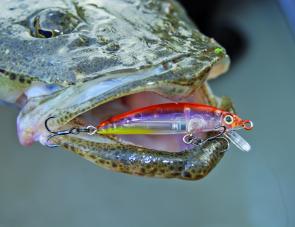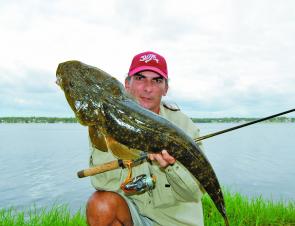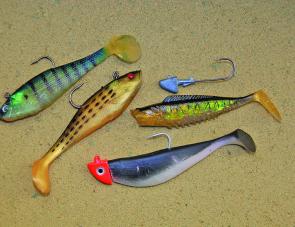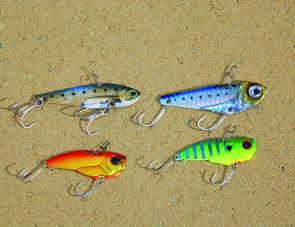Most east coast estuary systems are rivers with a reasonable sort of tidal flow. There are, however, a number of large lakes along the NSW coast that may require slightly different angling tactics to achieve success.
Bodies of water such as Lake Macquarie, Tuggerah Lakes and Lake Illawarra may have a certain degree of tidal flow down towards the mouth, especially at Lake Macquarie, where water absolutely rips through the Swansea Channel.
However, in the main body of the lakes themselves, such currents may be almost non-existent. And the further south of Sydney you venture, the more you’ll encounter lakes of all sizes which may be landlocked for even years until there’s enough rain for them to burst out to sea.
Apart from lack of tidal movement, large coastal lakes tend to be quite shallow compared with major rivers and at first glance they lack features that we often associate with flathead fishing.
On closer inspection, though, there are plenty of weed beds, shallow bays, points, drop-offs and feeder creeks.
Other less obvious signs to look for are clusters of moored boats, small rises or humps on the bottom and concentrations of bait like small mullet, herring, whitebait or prawns.
Depth is another aspect to consider. In most cases, lake-dwelling flathead prefer shallows under 2m. However, they will also move right up into the extreme shallows where only a few centimetres of water covers their heads, especially through the warmer months and also at night.
On the other hand, they may retreat into deeper water through the middle of the day and most lizards also seem to prefer the depths through the cooler months.
Trolling medium deep-diving hardbodies is a great way to locate a few fish in unfamiliar territory. If a fish or two is hooked then you can pull up and start casting or simply continue to troll in the same area.
Some of my favourite trolling lures are Lucky Craft Pointers and Staysees, the Mann’s Stretch series and Nils Master Invincibles. Around shallower lake margins, the small Yamashita Fake Baits have also worked wonders when I’m slowly trolling in my kayak.
Of course, soft plastics work exceptionally well on lake lizards and a huge variety of softies can be put to good use.
If pressed to nominate ‘no-fail’ softies, I couldn’t go past the 5” Berkley Gulp Jerk Shad or 4” Berkley Power Minnow.
I favour lighter colours but have also seen dark colours catch fish around the lake.
Because the water is comparatively shallow and current is almost non-existent, only very light jig heads are required to match these plastics.
When specifically seeking larger lake flathead, a better option may be to cast shad-style plastics around 15cm to 18cm long. Some of these, like the Reidy’s and Storm Shads, are pre-rigged, but others may require a strong 4/0 to 7/0 jig head.
Light weights are perfect for the main lake bodies but jig heads of 1oz to 2oz are a better bet when working areas close to the open mouths of the lakes.
Metal blades are another very effective alternative.
Smaller blades popular for bream will be quickly devoured by a flathead, but we should also take into consideration that these little lures often tend to be completely inhaled by any decent lizard.
This means that a quality abrasion-resistant leader should be used and long-nosed pliers or locking forceps should be carried so that extracting the metal blade is easier.
Once one flathead has been hooked, there’s a fair chance of more in the immediate vicinity. So keep casting and fan the casts so that you cover as much of the nearby area as possible.
If no fish are hooked within a dozen casts, slowly move along and repeat the casting process, or start trolling.
Baits also work well on lake flathead and some of the more effective ones to try are live prawns, small live poddy mullet, thin strips of mullet or tailor, frogmouth pilchards and whitebait.
There are three basic ways of bait-fishing for flathead.
The easiest is to pick a spot and simply cast out and wait for a fish to find the bait. In places where flathead are quite concentrated, that approach may work well but often you’ll have to keep the bait moving to cover ground and find more flathead.
Drifting has long been a popular way to come in contact with patches of flathead. When drifting it’s important to have enough sinker weight to keep baits close to the bottom, but not too much weight or the rig may just bury into the sand or keep fouling up on weed.
Two different types of bait, set on different lines, can be a good idea when drifting. Chances are, one type of bait will be more effective than the other and once you find out which is best then both lines can be baited with the same offering.
The third method of bait fishing is to do the same thing as when casting lures – fan out your casts and slowly hop the bait along the bottom until a fish is hooked.
As with lure casting, if you don’t catch a flathead within a dozen casts then it’s time to move on, perhaps 10m or so, and repeat the process.
When using strip baits or small whole fish like whitebait, a good rig to use is two hooks ganged together. In this case the exact hook sizes should match the size of the bait being used.
For whitebait No 2 Mustad Tarpon hooks are suitable, but for larger strip baits sizes 1/0 or 2/0 may be better.
Small live baits are best pinned through the top part of the fish or prawn with a single hook.
Once again, the size of the hook should match the bait. Go too big and the live bait will probably die prematurely; too small and you may miss a hook-up. I recommend about a 1/0 for a prawn and a 4/0 to 6/0 for the average poddy mullet.
Way back in the dark ages, wire traces were often used for flathead but over the years we’ve come to know better. Lighter leaders tend to get more bites and for average lake flathead, a leader or trace of around 5kg or 6kg nylon mono or fluorocarbon is quite adequate.
In places where larger flatties are on the cards, I step up to 8kg to 12kg leader.
I’ve used a range of different lines for leaders and traces over the years, but these days I’m leaning towards Sunline FC Rock fluorocarbon as it’s about the most abrasion-resistant line I’ve come across to date.
A final tip is to try around bridge, jetty or other forms of lighting at night.
If you haven’t tried this you may be surprised at how many flathead gather around illuminated water at night, particularly in the shallows close to shore.
All manner of baits or lures can be used under lights, but I’ve had the greatest success with white or very light-coloured soft plastics bounced along the bottom.
Lakes and coastal lagoons are real flathead havens, so by applying the tips and techniques outlined here, you are should do well this Summer.
This nice flattie was caught on a 4” Berkley Power Minnow in 2m of water.
There’s no doubt that soft plastics are highly effective on flathead. When trying to catch big flathead it pays to use larger plastics like these.
Medium-sized metal blades may bring flathead undone if other lures aren’t working.
Reads: 6361
The author with a nice Lake Macquarie flathead taken on a soft plastic in 3m of water.

The small Yamashita Fake Bait has worked exceptionally well for the author around the shallow lake margins.

-

Finding lake lizards is a searching process and once a fish has been hooked, it’s a good idea to stop and thoroughly work over the area with lures or baits.

-

-




